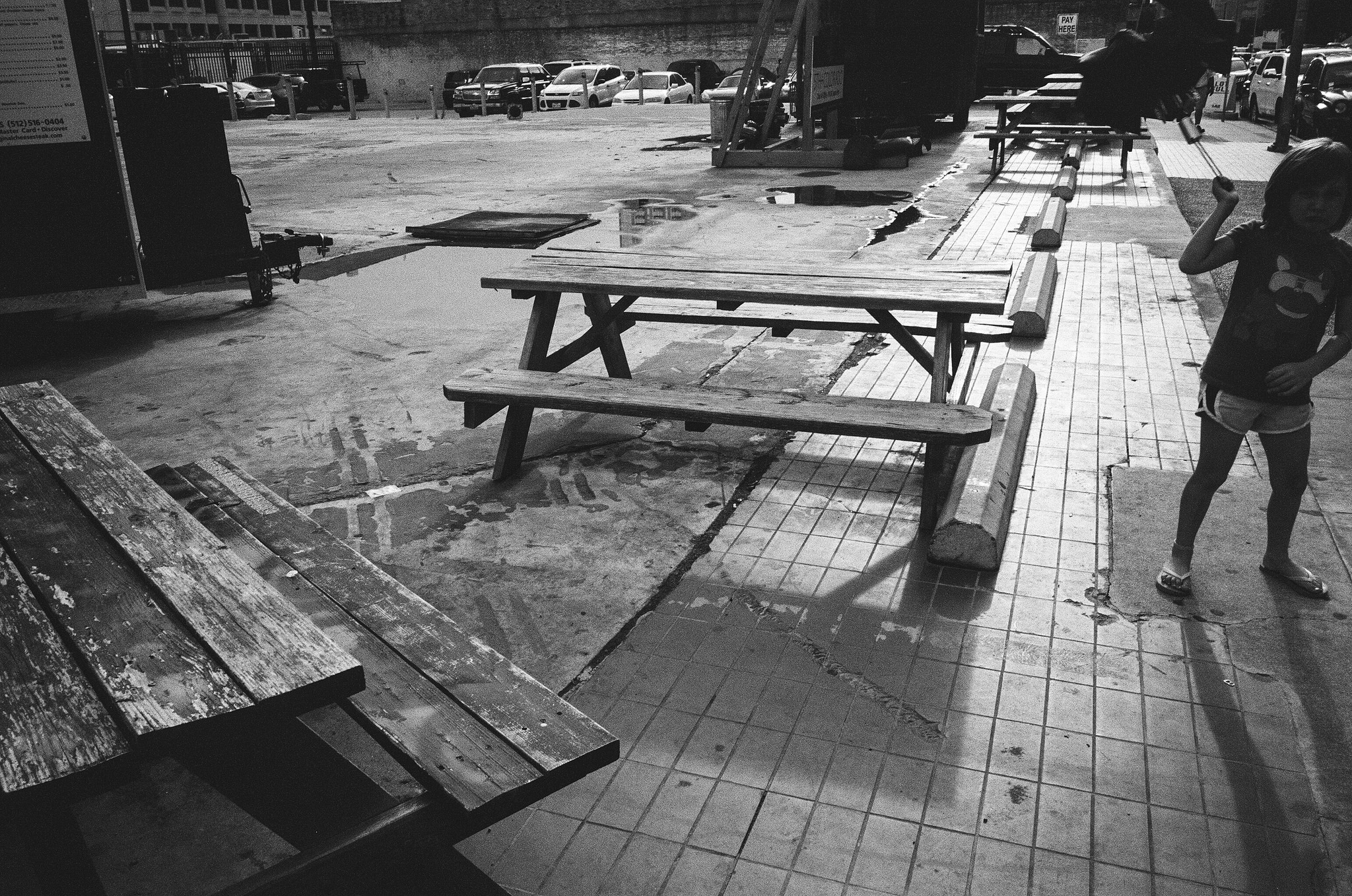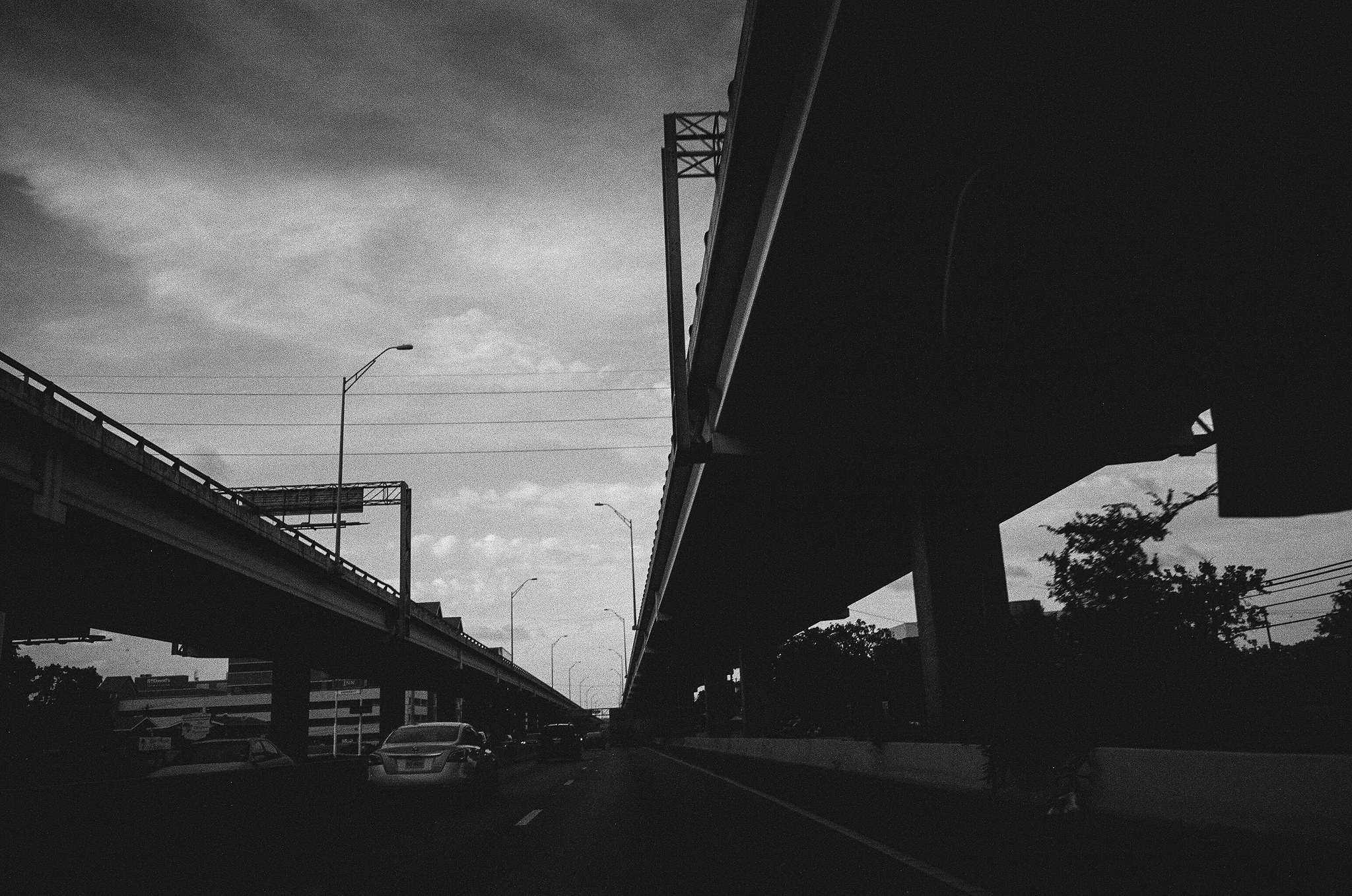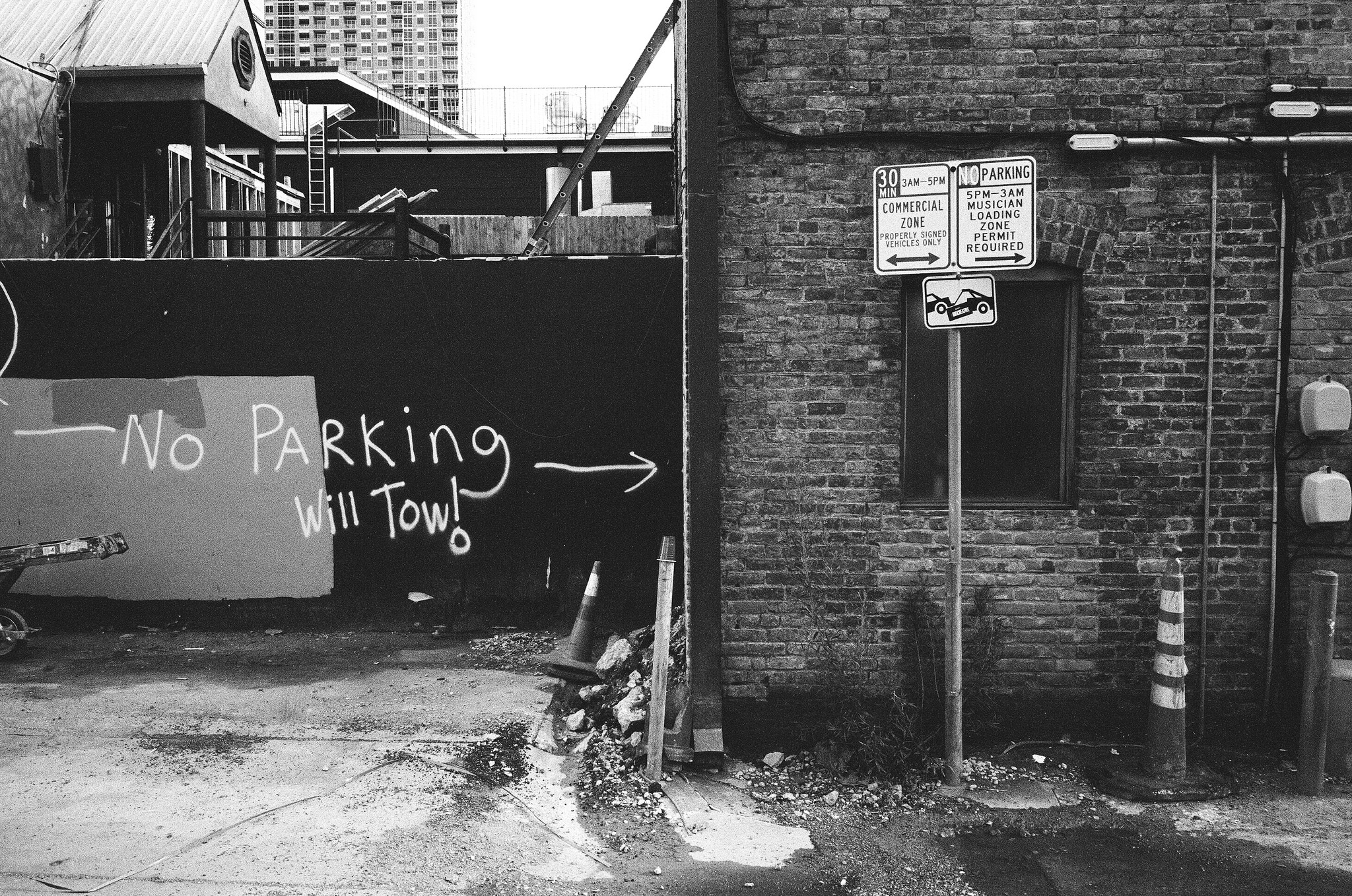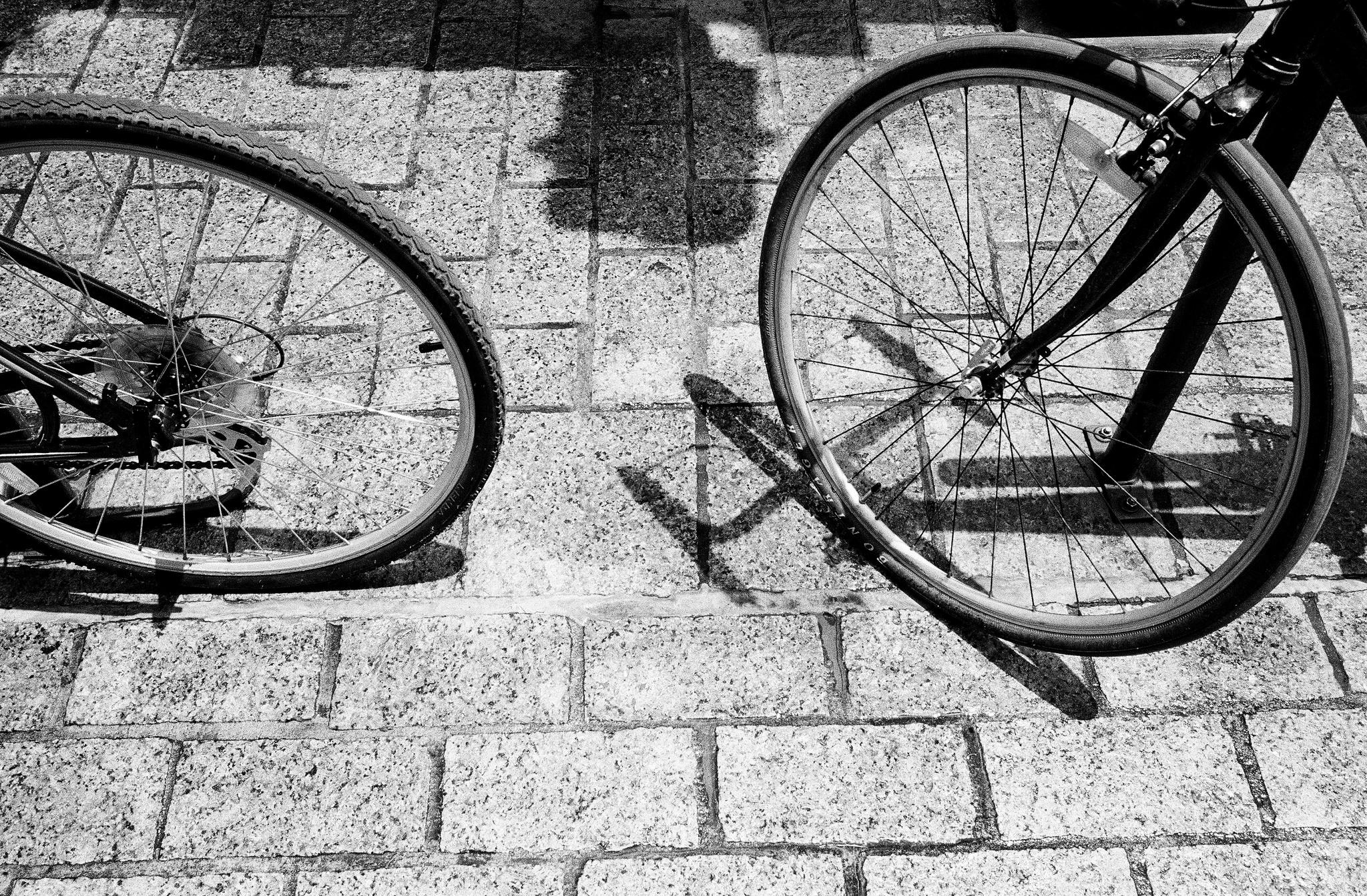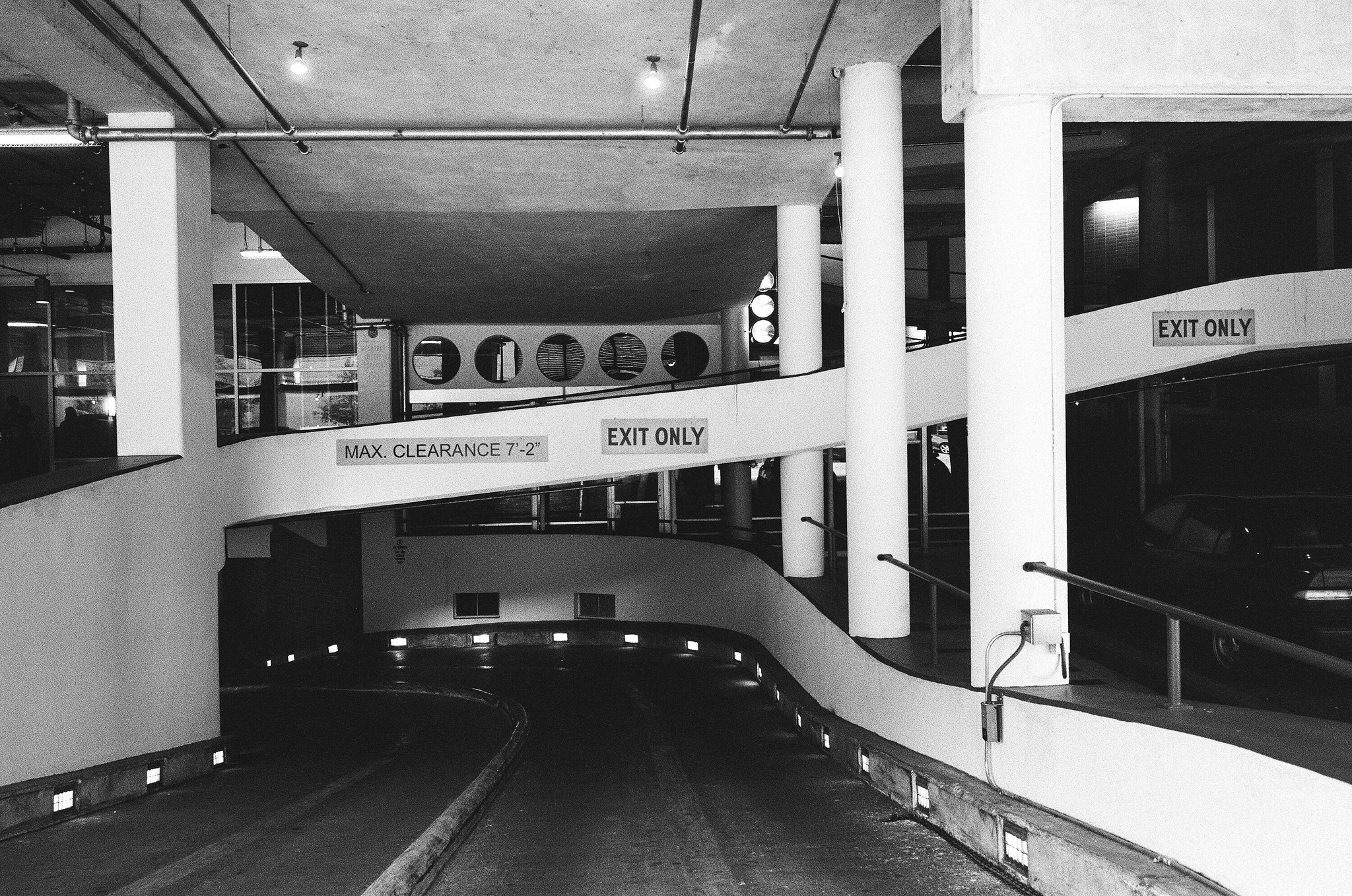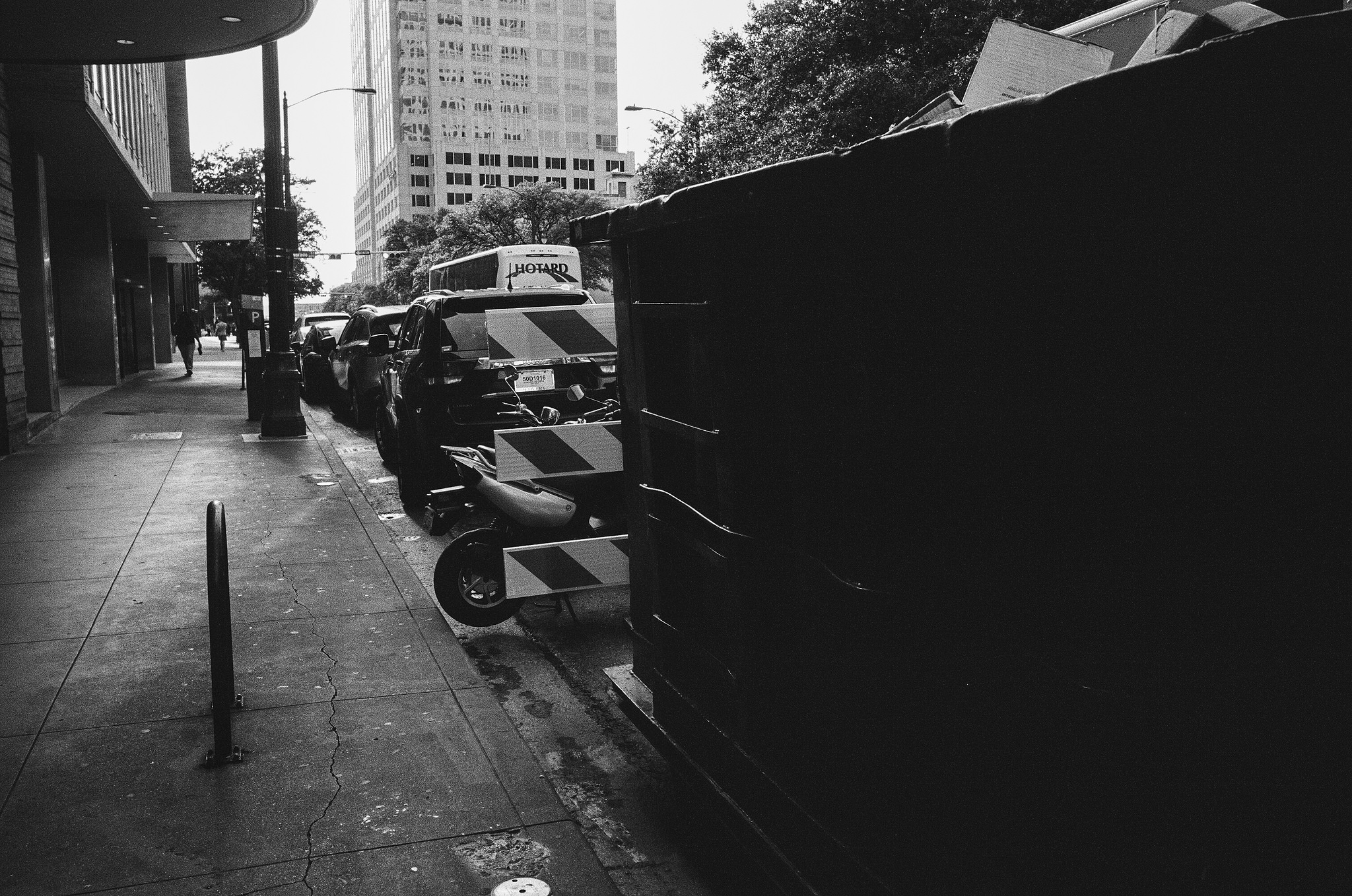Introduced in 1954 with production ending in 1966, the M3 was the first Leica model to combine a rangefinder in the viewfinder, and the first model to be fitted with the M-mount, still in use over a half-century later. This camera was a favorite of many iconic photojournalists from the 50s and 60s: W. Eugene Smith, and Henri Cartier-Bresson among them, and later used by Eugene Richards and Garry Winogrand to document American streets and towns in the 1970s and 80s.
Some thoughts about a few of its properties: the heft of the body mass, solid and sturdy enabling an ergonomic fit in the hand; the challenge of loading film, two pieces which you remove to string the film through, then reload into the camera; the ISO dial, confusing even to an experienced shooter, exists only as a reminder (if the dial’s been set correctly); the rule of “Sunny 16” must be applied if you don’t possess a light meter, an inconvenient device even in the best situations.
All of this constraint is what makes a Leica a Leica. It imposes limitations on the photographer that must be learned, anticipated, and overcome. The camera makes you think before you shoot: about the necessary mechanics, the subject itself, how much film you have left.
My first images are shown here, piloted on a few downtown streets in the heat of a late afternoon summer. There’s a richness to the photos, a heavier contrast perhaps the result of metering guesswork and time of day.
